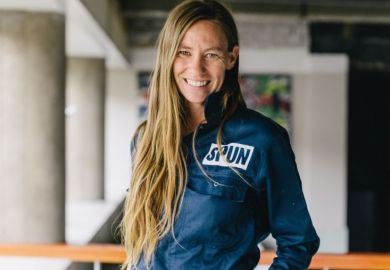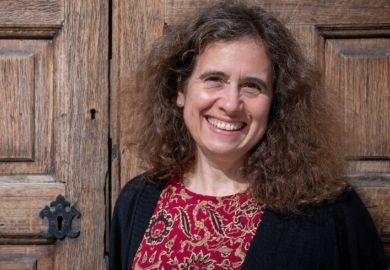There is a scene in the second Terminator film in which the Terminator's wicked opponent gets smashed to bits. But then something sinister occurs: some of the chunks of the defeated warrior form into a metallic pool on the ground. From this glinting liquid spontaneously emerges an even fiercer opponent, reassembled from the ground up, without anyone helping or directing.
This is a case of art imitating life. Real animal embryos start out as a single amorphous fertilised egg that first divides into two cells. These cells act as the progenitors for the right and left sides of the body, producing right and left arms, legs, kidneys, eyes and ears. They do so spontaneously and without any help; there is no god directing traffic in the body-machine.
Perhaps even more impressive is that, like the pieces of the Terminator's opponent, the individual cells of a developing embryo seem to know how to behave. Take the right-hand cell from the two-cell embryo stage, grow it on its own and you do not get the right-hand half of the animal, rather a fully formed individual arises. At later stages of development, when many more cells exist, right- and left-hand growth fields in the embryo fuse to produce the heart. If this fusion is blocked, however, each side produces a fully formed heart. Cells acquire fates that are determined by their positions relative to other cells, and they can adjust those fates with what might appear to be uncanny foresight when circumstances intervene to alter the normal course of development.
To most geneticists, details such as these constitute proof that the complete set of instructions for building an organism can be found in the genetic information that resides in the nucleus of nearly every cell of a body. The assumption that the set can be discovered and read is a central part of the rationale of the Human Genome Project, and the scourge of all those who fear that genetic determinism is at best simplistic and at worst may equate in some quarters to fascism. Not surprisingly, then, the debate attracts polarised views.
Brian Goodwin has, for over three decades, argued for a different view of development. In Form and Transformation he, along with philosopher Gerry Webster, assembles his arguments to deny genes such a central role in development. A favourite tactic is to find cases in which a range of genetically based circumstances in the embryo all give rise to the same adult "phenotype" - the body that emerges when the embryo has grown up.
Such observations equip Goodwin with a view of plant and animal development that might be more at home in ancient Greece than among most of his developmental biologist colleagues.
Goodwin believes that some kinds of phenotypes are nearly inevitable. Such things as rabbits, carrots and flying squirrels may be as they are not because they have evolved and adapted themselves over millions of years, but because there are only a limited number of workable ways that genes can produce bodies. This means that a range of different genotypes tends to converge on a common phenotype. In Goodwin's language, some phenotypes act as "attractors" in the space of all possible phenotypes. These are the "natural kinds" of development, phenotypes such as rabbits and carrots that will tend to emerge naturally and without further explanation (such as would be provided by an account of how rabbits or carrots are adaptations to their particular environments).
Plato might have approved. But is Goodwin pulling rabbits from hats? For most developmental biologists, the struggle is to give an account of how genes can participate alone or in combinations to produce the many and varied forms of natural life. A very recent example is the discovery of how three genes - call them A,B, and C - produce the sepals, stamens, petals, and carpels of flowers. These are the four elements of most flowers that give them their distinctive species or variety-specific displays: A genes specify sepals; A and B genes, the petals; B and C genes,the stamens; and the carpels are produced by C genes alone. The combinatorial action of a few genes makes possible many different phenotypes. Not surprisingly, biotechnology firms are interested.
For Descartes, a machine without some organising principle or mechanic was impossible, and God became the mechanic behind the human machine. Goodwin and Webster see the legacy of this machine analogy in later attempts to place genes at the forefront of developmental explanation: God comes to reside in a genome that specifies the parts that constitute an organism. Although the machine analogy is wrong the conclusion of the past ten years' genetic research is that genes play a greater role in determining our fates than previously imagined. Goodwin and Webster may not like this, but identifying how genes specify bodies, and do so reliably and with precision, appears to be a far more promising trick than reaching into the darkness of a hat.
Mark Pagel is in the School of Animal and Microbial Sciences, University of Reading.
Form and Transformation: Generative and Relational Principles in Biology
Author - Gerry Webster and Brian Goodwin
ISBN - 0 521 35451 X
Publisher - Cambridge University Press
Price - £40.00
Pages - 287
Register to continue
Why register?
- Registration is free and only takes a moment
- Once registered, you can read 3 articles a month
- Sign up for our newsletter
Subscribe
Or subscribe for unlimited access to:
- Unlimited access to news, views, insights & reviews
- Digital editions
- Digital access to THE’s university and college rankings analysis
Already registered or a current subscriber? Login



